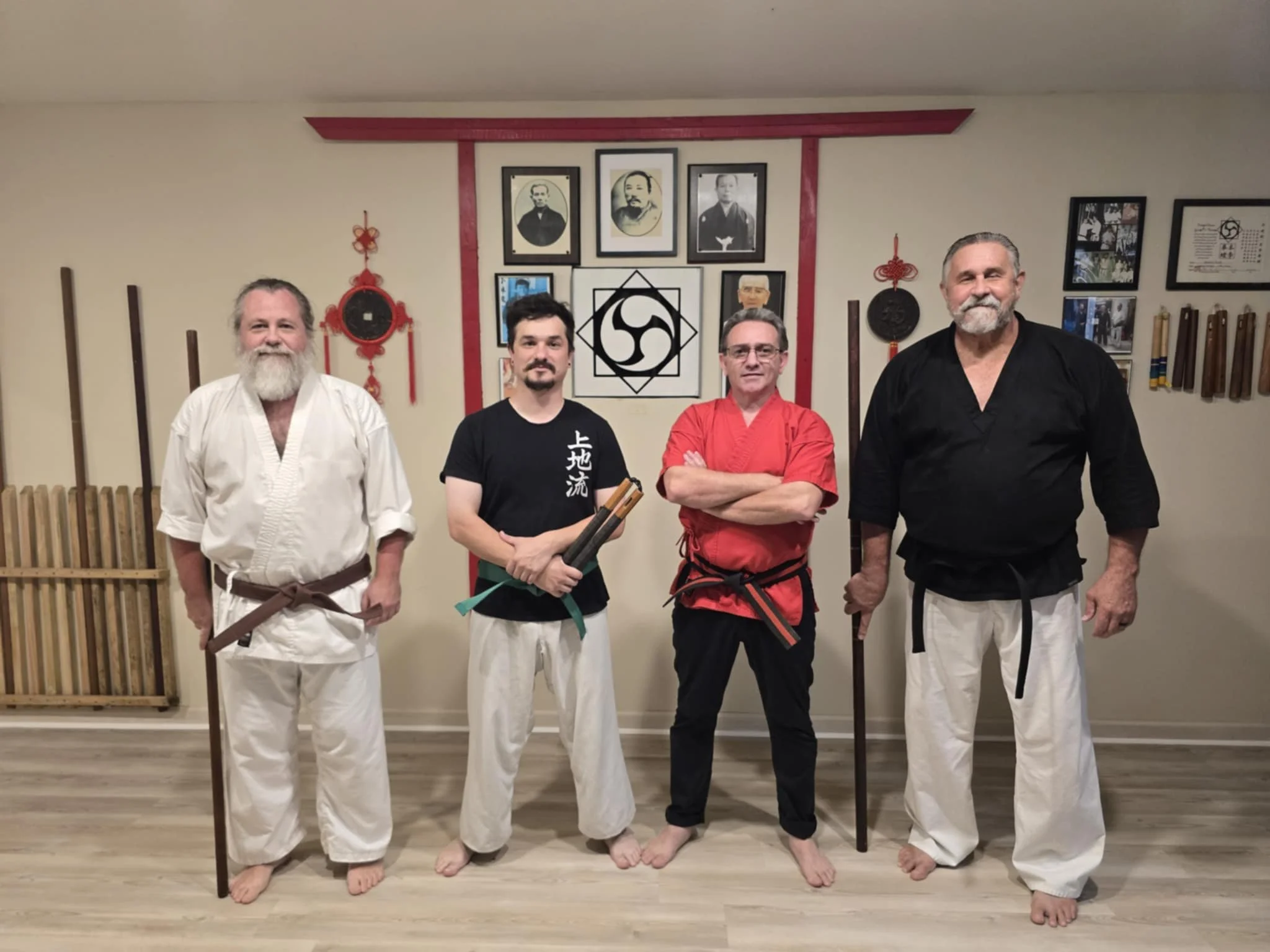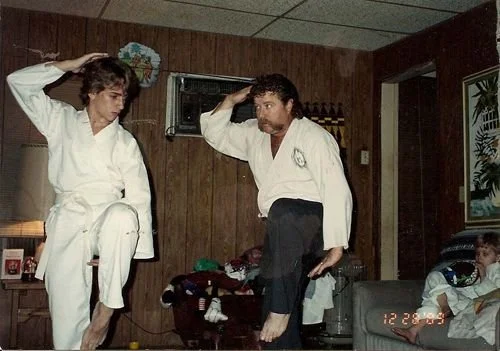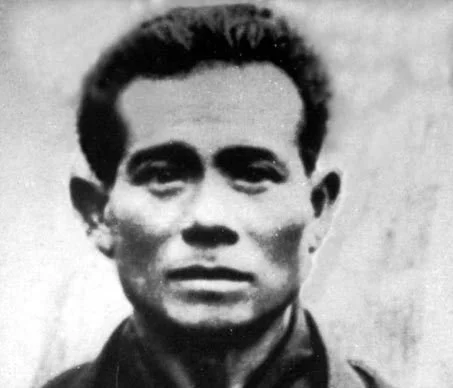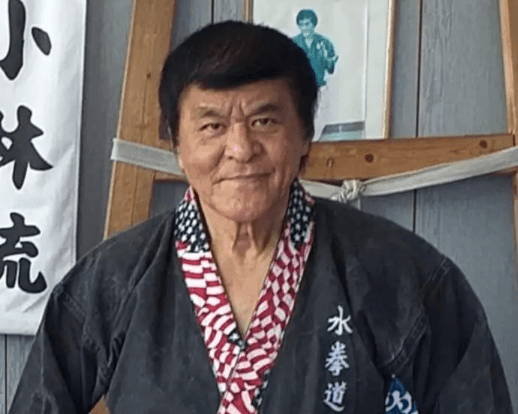The Tallahassee Family Martial Arts Club traces its roots through generations of dedicated martial artists — each preserving and evolving the Pan Gai Noon (PGN) system while honoring its Chinese and Okinawan heritage.
Our Roots in China
Pangai-Noon, the system from which Uechi-Ryu Karate evolved, is the product of centuries of refinement and cultural exchange. It draws from several Southern Kung Fu systems of Hakka origin, including Chu Gar, Southern Shaolin Boxing, Southern Mantis, and elements of White Crane.
While much of its early history blends fact and legend, these stories preserve the spirit, ethics, and philosophy of our art. Whether mythic or historical, they remain an essential part of its cultural identity—reminding us that martial practice is not only about combat, but also about balance, virtue, and the continual cultivation of self.
-
Written records suggest that some form of martial art was practiced in China nearly 5,000 years ago, and likely existed even earlier alongside the development of traditional medicine. Ancient texts attributed to the mythic Yellow Emperor (Huangdi) describe early martial practices, philosophy, and medical theory, blending combat and healing as two parts of one discipline.
Throughout Chinese history, martial training was essential for self-defense, hunting, and warfare. By the Xia Dynasty (c. 2100–1600 BCE), hand-to-hand combat and weapon practice had become central to military preparation. Over time, these arts absorbed philosophical ideas from Confucianism, Taoism, and Buddhism, evolving beyond mere combat into systems of health, discipline, and spiritual cultivation.
By the time of Confucius (6th century BCE), the “literary and martial arts” were viewed as complementary skills of the cultivated person. Early forms of combat such as Jiao Li (grappling) and Shou Bo (striking) were recorded in classical texts, and the concepts of “hard” and “soft” techniques appear in stories like that of the Maiden of Yue.
From the Tang through the Ming and Qing Dynasties, martial arts continued to develop, appearing in poetry, philosophy, and later, literature and theater. By this time, the idea of martial arts as moral and spiritual training was firmly rooted in Chinese culture.
-
The Shaolin Temple, established around 540 CE, became legendary as a center of both Buddhist study and martial practice. According to tradition, Bodhidharma (Tamo), an Indian monk, introduced physical exercises to strengthen the monks for meditation. These movements, inspired by animals and yoga, evolved into the foundations of Shaolin Kung Fu.
Over centuries, Shaolin monks refined their martial discipline to defend their temples from bandits and soldiers. Their philosophy emphasized that kung fu was defensive, not aggressive—violence was only to be reflected back upon the attacker.
Two temples were most influential in Southern Chinese martial development:
Hunan (Northern Shaolin) — the principal temple in Henan Province, often seen in films and legends.
Fukien (Southern Shaolin) — located in Fujian Province, associated with the origins of Southern Mantis, Wing Chun, White Crane, and other styles.
Though debate continues over whether the Fukien Temple ever historically existed, its presence in countless oral traditions gives it lasting symbolic power. Whether fact or myth, its stories continue to shape the soul of Southern martial arts.
-
When Chu Yuan-Chang, a Buddhist monk, overthrew the Mongols and founded the Ming Dynasty (1368–1644), martial arts such as Chu Gar (Chu Family Style) became the official fighting art of the royal court. During this era, China experienced economic recovery, agricultural expansion, and strong military organization.
After the Ming fell to the Manchurian Qing Dynasty (1644–1911), surviving members of the Ming royal family and loyalist monks fled to Shaolin temples in the South. The Qing destroyed these temples, and many monks and families went into hiding—these refugees became known as the Hakka, or “Northern Guests.”
To protect their art, the Chu family renamed their system “Praying Mantis”, disguising its royal connection. This secrecy preserved the art through centuries of persecution, later influencing styles such as Chow Gar Southern Mantis.
-
According to legend, Chow Ah Naam, a Cantonese man cured of illness by monks at the Fukien Temple, stayed on as a kitchen servant and martial student. After witnessing a praying mantis defeat a bird, he mimicked the insect’s movements to create his own fighting method.
Historically, this story likely served to conceal Chow’s connection to the Chu Gar family style. More plausibly, Chow studied the secret Ming-era art from a Hakka practitioner under temple protection. With guidance from Master Sim Yan, Chow’s techniques were blended with Shaolin Boxing, forming the Chow Gar Southern Mantis system—a bridge between Northern and Southern Shaolin traditions.
-
After the Qing conquest, underground resistance movements arose, seeking to “Restore the Ming and Overthrow the Qing.” The Hung Mun or Heaven and Earth Society became the most famous, uniting monks, soldiers, and civilians under moral and patriotic ideals. Over time, many of these groups drifted from politics into organized crime, becoming the Triads known today.
By the late 1800s, resentment of foreign control and imperial weakness erupted in the Boxer Rebellion (1900–1901), led by practitioners of martial and spiritual disciplines known in the West as “Boxers.” Although the movement failed militarily, it reflected the enduring link between martial practice, national identity, and resistance to oppression.
It was within this turbulent era—amid rebellion, secret societies, and foreign intrusion—that Kanbun Uechi and Shu Shi Wa trained together in Fukien Province. Some suggest that these two young masters were involved in training or recruitment efforts connected to the Boxer Rebellion, placing the roots of Pangai-Noon within one of China’s most transformative historical moments.
Train. Learn. Grow.
Catch the action on our YouTube channel! We post class clips, technique tips, student stories, and behind-the-scenes moments from our dojo in Tallahassee. Subscribe and follow along as our students kick, grow, and achieve together.





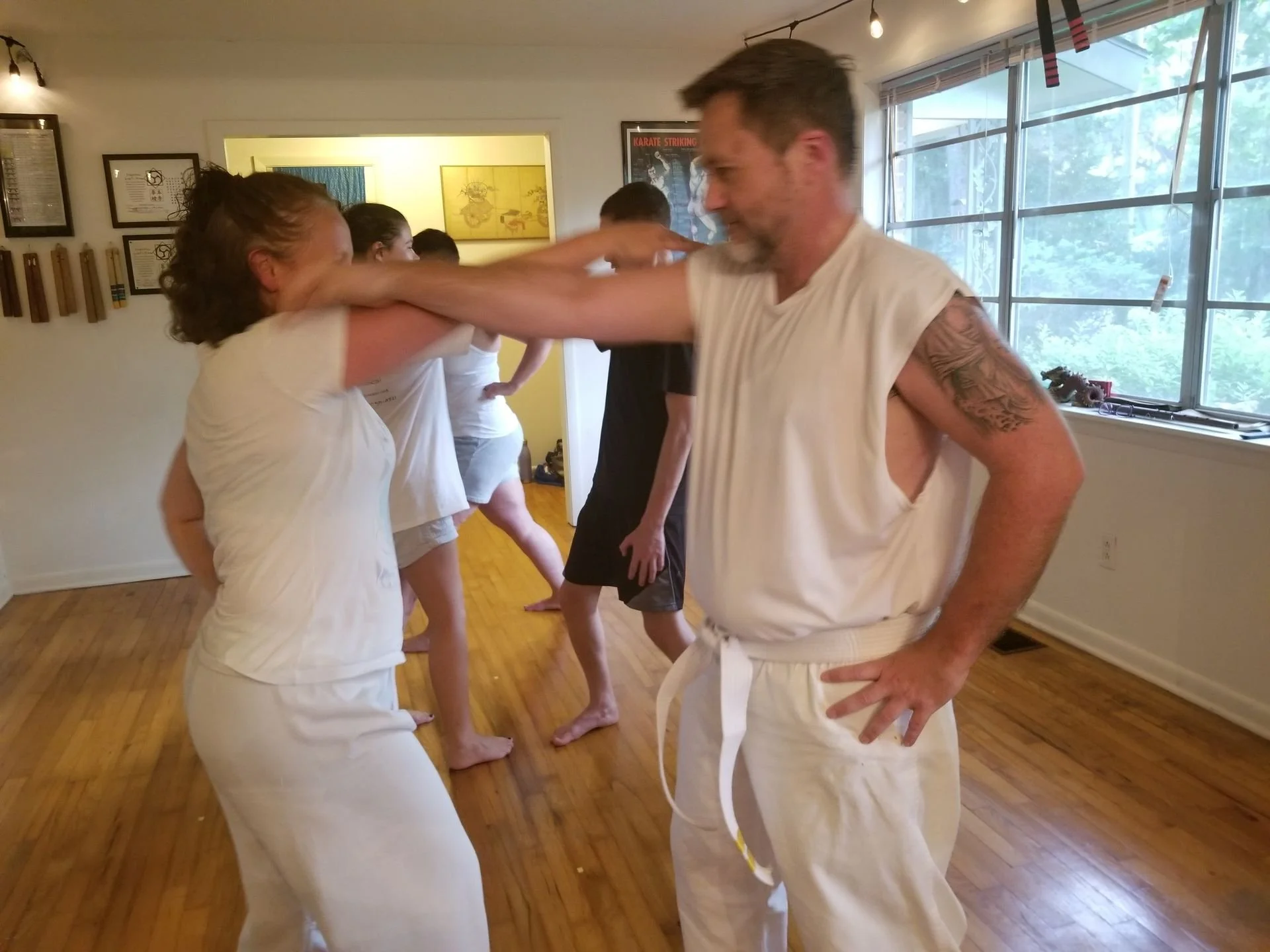
Our Lineage

